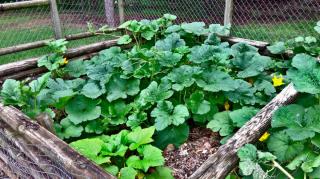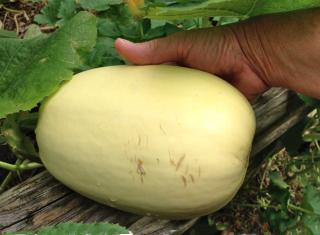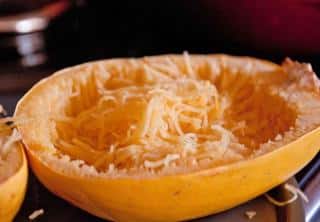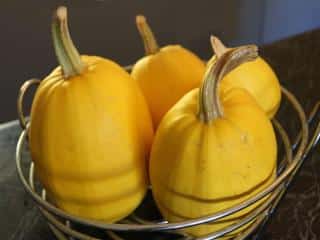

Spaghetti squash, named after the famed Italian pasta, is an easy fruit to grow that is very appealing on the dinner table.
Simple spaghetti squash facts
Name – Curcubita pepo
Family – Cucurbitaceae or gourd
Type – vegetable
Harvest: September-October
Height: 8-20 in (20-50 cm) – Exposure: full sun – Soil: rich
From seed to harvest, here is everything you need to know to grow your spaghetti squash well and have great harvests.
 Depending on the climate in your area, February-March is the right time to start sowing spaghetti squash under cover in nursery pots followed by transplanting when the last frosts are past, or you can also wait for direct sowing starting from the month of May.
Depending on the climate in your area, February-March is the right time to start sowing spaghetti squash under cover in nursery pots followed by transplanting when the last frosts are past, or you can also wait for direct sowing starting from the month of May.
If sowing in nursery pots, count more or less 3 weeks before transplanting them to the ground. That’s why there is no need to sow early.
It is also possible to sow directly in the ground, starting from the month of May, if the area is prone to mild fall seasons.
You can pinch off stems after the 3rd or 4th leaf to stimulate plant growth, this will ensure better productivity.
Once your spaghetti squash have grown well, mulch their base to keep the soil moist and cool.
Spaghetti squash needs water to develop well, especially in case of heat and/or extended dry spell.
 The right time to harvest spaghetti squash is when its color is bright yellow. The color of the spaghetti squash is a great indicator to know when it is mature.
The right time to harvest spaghetti squash is when its color is bright yellow. The color of the spaghetti squash is a great indicator to know when it is mature.
A second sign is that the spaghetti squash must have a perfectly smooth skin.
 After the harvest, spaghetti squash can keep for several months, in a dry room with a temperature ranging from 50 to 60°F (10 to 15°C).
After the harvest, spaghetti squash can keep for several months, in a dry room with a temperature ranging from 50 to 60°F (10 to 15°C).
There are dozens of varieties, some of them heirloom, others hybrids. Here are some of the main ones:
 ‘Angel Hair’ – roundish fruit, bright yellow, thin strands
‘Angel Hair’ – roundish fruit, bright yellow, thin strands It belongs to the Cucurbitaceae family, of which it is most probably one of the most remarkable members. It’s native to Manchuria, in East Asia.
It belongs to the Cucurbitaceae family, of which it is most probably one of the most remarkable members. It’s native to Manchuria, in East Asia.
Indeed, this “spaghetti” gourd has a unique flesh that contains long strands that are very similar to the famous Italian pasta when cooked.
Its flesh isn’t particularly savory or exceptional compared to other squash, but its surprising spaghetti-like shape made it famous.
You’ll be treating children and adults to a true surprise when cooking this gourd, and preparing it in exactly the same manner as you would real spaghetti.
With low calorie levels and high vitamin C content, spaghetti squash also has demonstrated antioxidant properties.
Note that spaghetti squash seeds are perfectly edible and, once dried, are a perfect addition to mixed salads or served with salt for appetizers.
Take care not to let too many fruits develop on a single plant (at most 5), or you might reduce the quality of the entire harvest overall.